Are flamingos really the cleanest?! Even when on one leg...?
Welcome to spring flamingo followers. It’s a great time to pop along and see the birds looking at their best. Especially now that flamingos can be back out and about following the departure of avian ‘flu from the UK. To start, I just want to share this photo of some of the WWT Slimbridge Caribbean flamingos, out enjoying one of their first days of spring sunshine because I think they look beautiful. That's a LOT of colour!
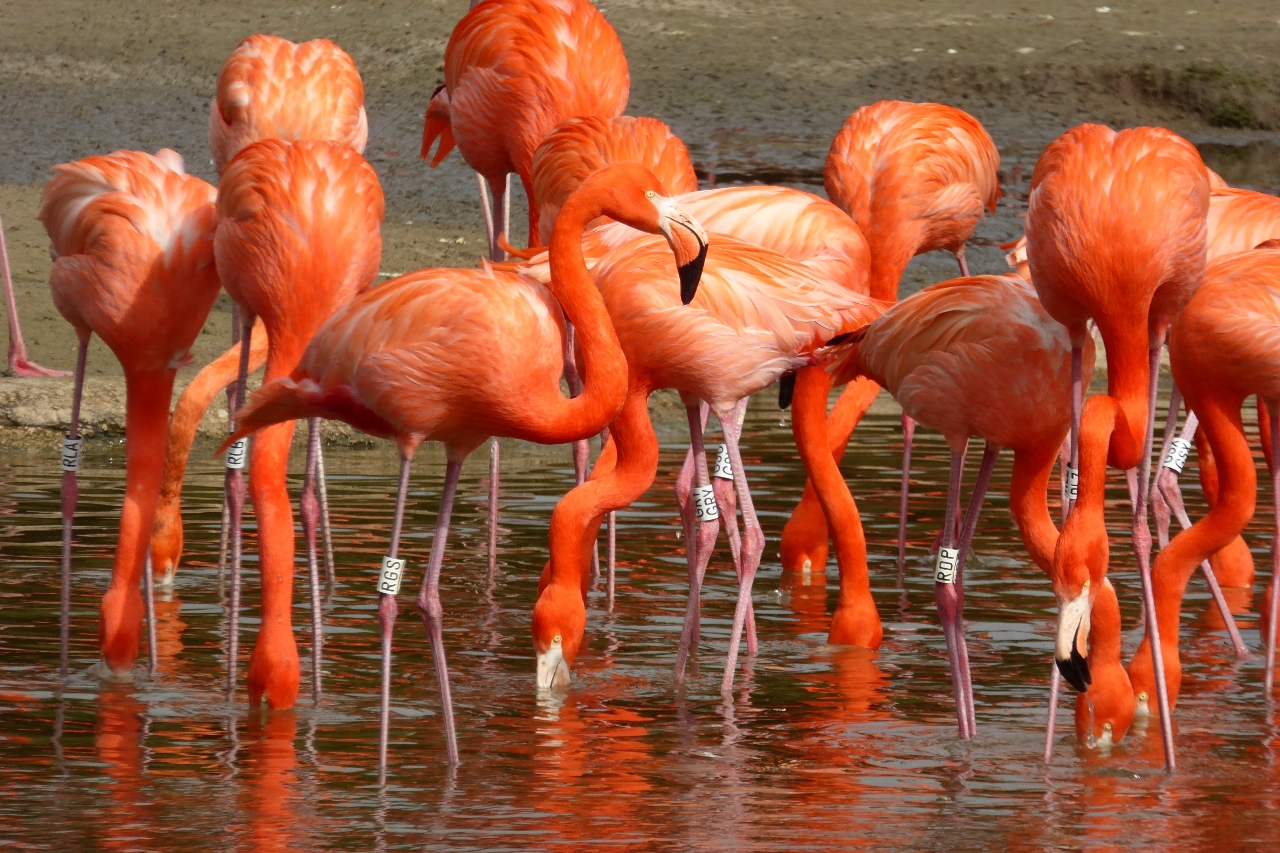 There's orange, and then there's Caribbean flamingo orange. What a stunning group of birds. This shows the hardwork of the WWT Slimbridge avicultural team in keeping them in such tip-top condition throughout the winter and AI period.[/caption]
There's orange, and then there's Caribbean flamingo orange. What a stunning group of birds. This shows the hardwork of the WWT Slimbridge avicultural team in keeping them in such tip-top condition throughout the winter and AI period.[/caption]
There’s a great deal of activity in all flocks, and youngsters from 2017 are getting pinker and pinker. Even the parents of these chicks are starting to look a bit more colourful around the edges. I especially like this adult Caribbean flamingo, in the middle of the photo, with its bright pink face and paler body!
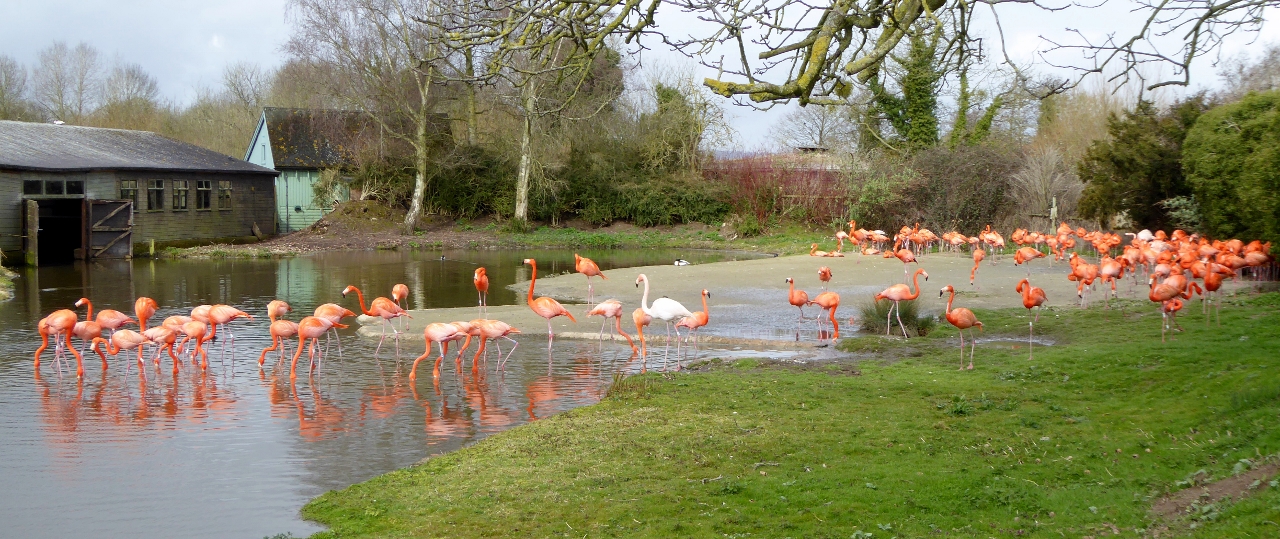 Spot the parent... Not blushing but slowly getting back into pretty in pink.
Spot the parent... Not blushing but slowly getting back into pretty in pink.
So what is new for 2018 in the world of WWT flamingo science? This year I have two new MSc students from the University of Exeter starting their research at WWT Slimbridge this month- Rachael and Danielle, who are going to answer some very different, yet fundamental questions, relating to flamingo behaviour.
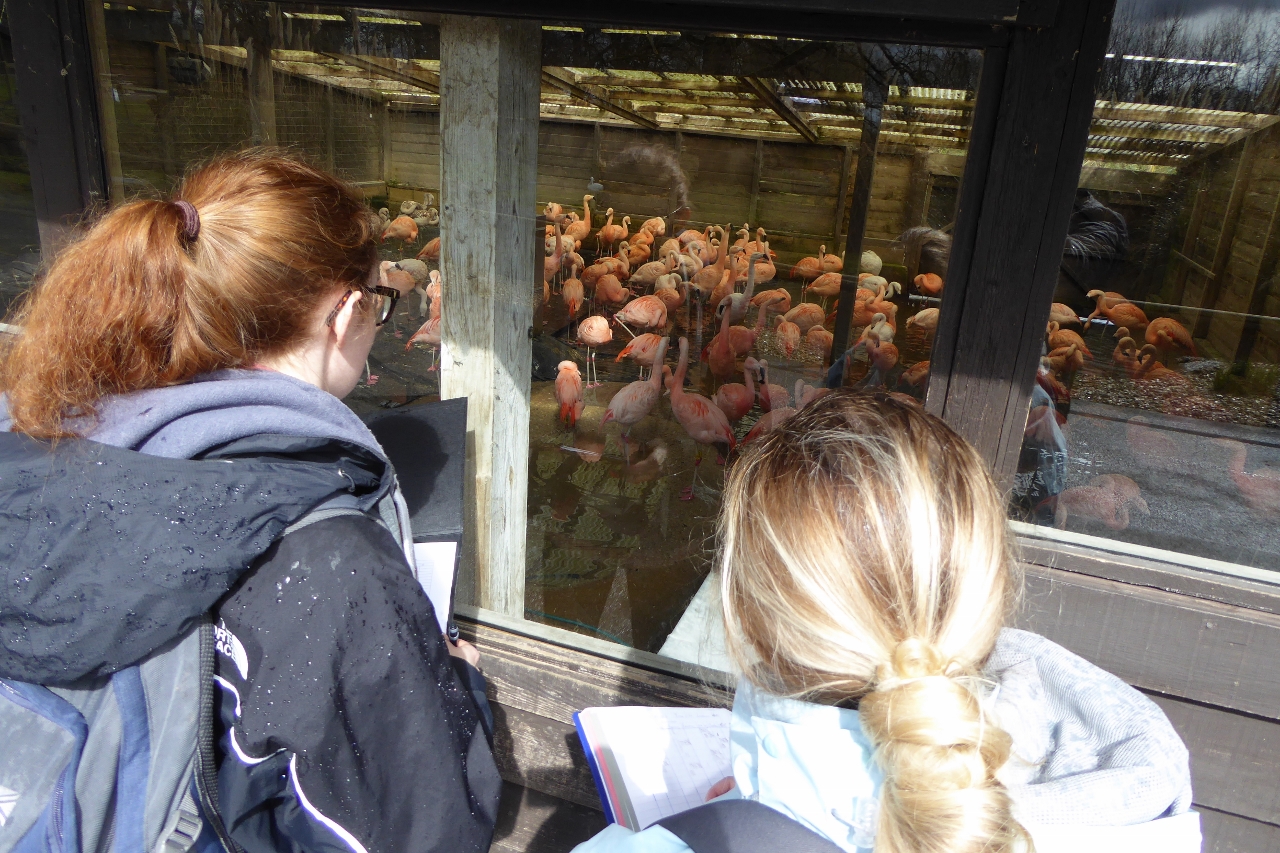 MSc Animal Behaviour students and budding flamingo researcher Danielle and Rachael practice methods for collecting data using the WWT Slimbridge Chilean flamingo flock. Getting so close to the birds really helps with flamingo science!
MSc Animal Behaviour students and budding flamingo researcher Danielle and Rachael practice methods for collecting data using the WWT Slimbridge Chilean flamingo flock. Getting so close to the birds really helps with flamingo science!
Rachael is investigating two questions as part of her project. One that gets asked a lot from a general interest point-of-view. And the other that is a little more academic. At the Flamingo Specialist Group, we get a lot of questions asking “for how long do flamingos stand on one leg?” And believe it or not, for this common behaviour that everyone is so familiar with, there is no answer. Rachael is observing the birds in different flocks over the course of the spring and summer to find out more.
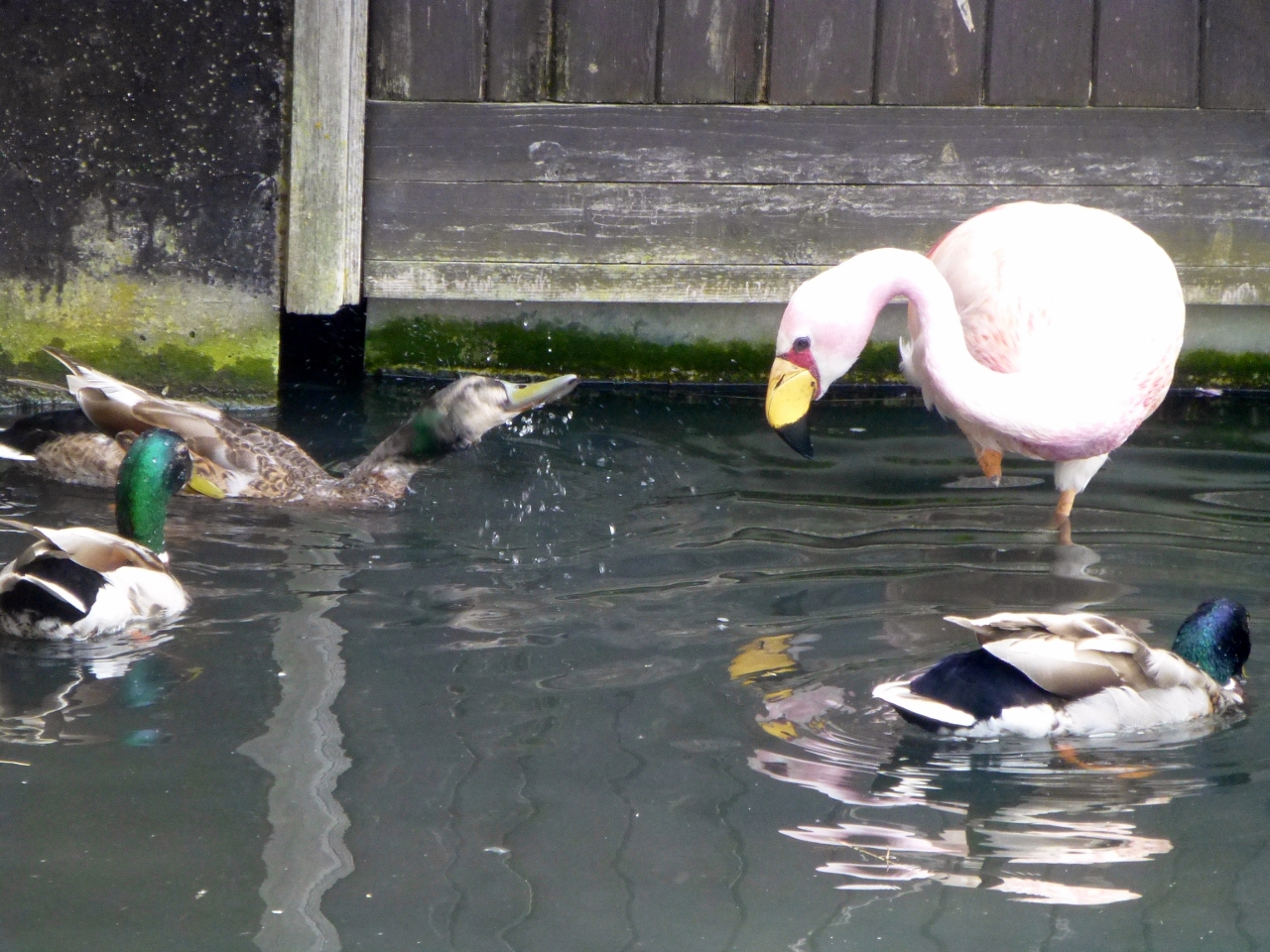 "Yes, you're quite right- I don't know how long I stand on one leg for either." Even Mr James and his mallard friends don't know the answer to that question.
"Yes, you're quite right- I don't know how long I stand on one leg for either." Even Mr James and his mallard friends don't know the answer to that question.
The more academic question relates to why flamingos appear to spend so long preening. Anecdotally, many people seem to say that flamingos spend more time preening than any other species of bird. So whilst Rachael is data collecting on one or two leggedness, she will also be noting down the time birds spend preening. These data will then be compared to information on other species to see how flamingos “fit” into the overall picture of bird feather hygiene!
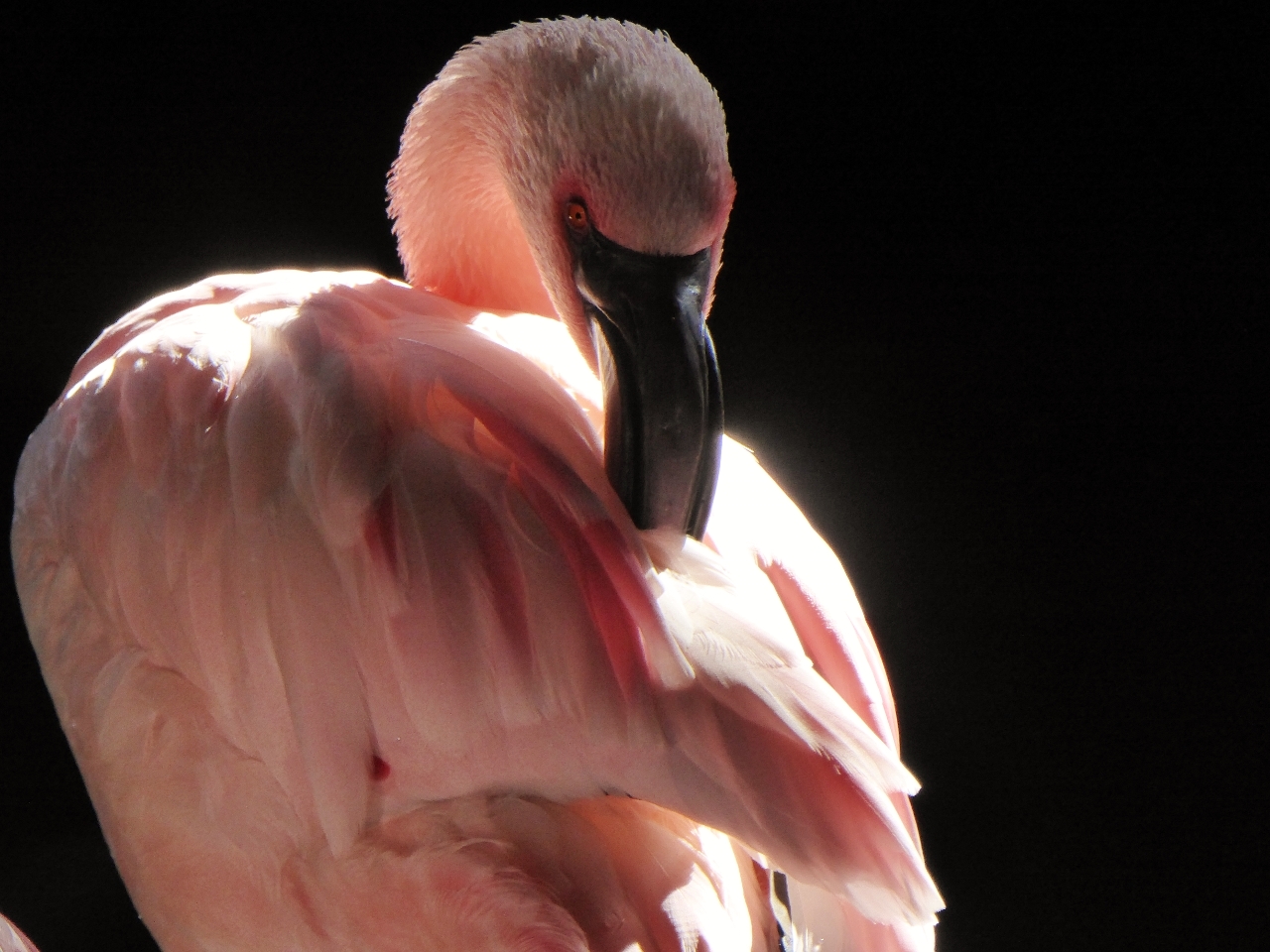 Clearly it takes a lot of work to look this beautiful.
Clearly it takes a lot of work to look this beautiful.
My other student, Danielle, is continuing with the social behaviour theme that has been a mainstay of these flamingo blogs. Using the Chilean flamingo flock, and specifically the birds with a ring on each leg, Danielle is looking at who initiates movement in the group and who is aggressive to whom. We know that flamingos have their friendships, but we’d like to look more closely into how these relationships form and what keeps birds together. Danielle is using the special group of “double ringed” flamingos because these can always be found in the flock, and we have an idea of their previous personalities (how social or solitary are they). This means it is easier for an observer to work out what is going on with a specific bird.
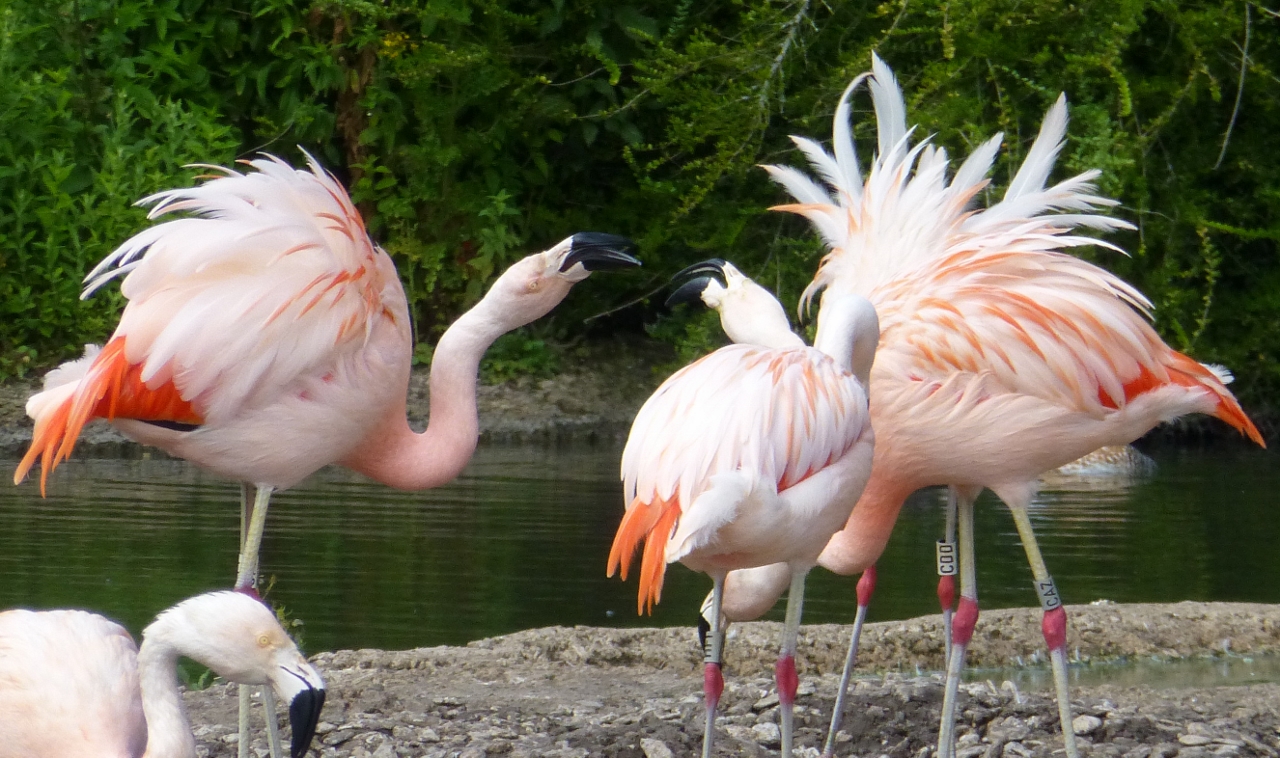 Arguments can get quite heated between different birds. Why do they happen and who gets involved?
Arguments can get quite heated between different birds. Why do they happen and who gets involved?
Alongside of these two project students, yet more student flamingo-focus has been taking place in April. The WWT flamingos are really good resources for teaching animal behaviour and a group of students from Bristol University have been staying at Slimbridge for a week-long field course. The Andean flamingo flock provided the backdrop for a session on flamingo behavioural ecology and natural history. And the birds behaved beautifully- doing some lovely false-feeding behaviour as part of their courtship display, and also squabbling and arguing at the precise moment when I was explaining about flamingo flock dynamics.
Come back to the Flamingo Diary later in the year when I will impart some more information on the findings of both Danielle's and Rachael's project work.



